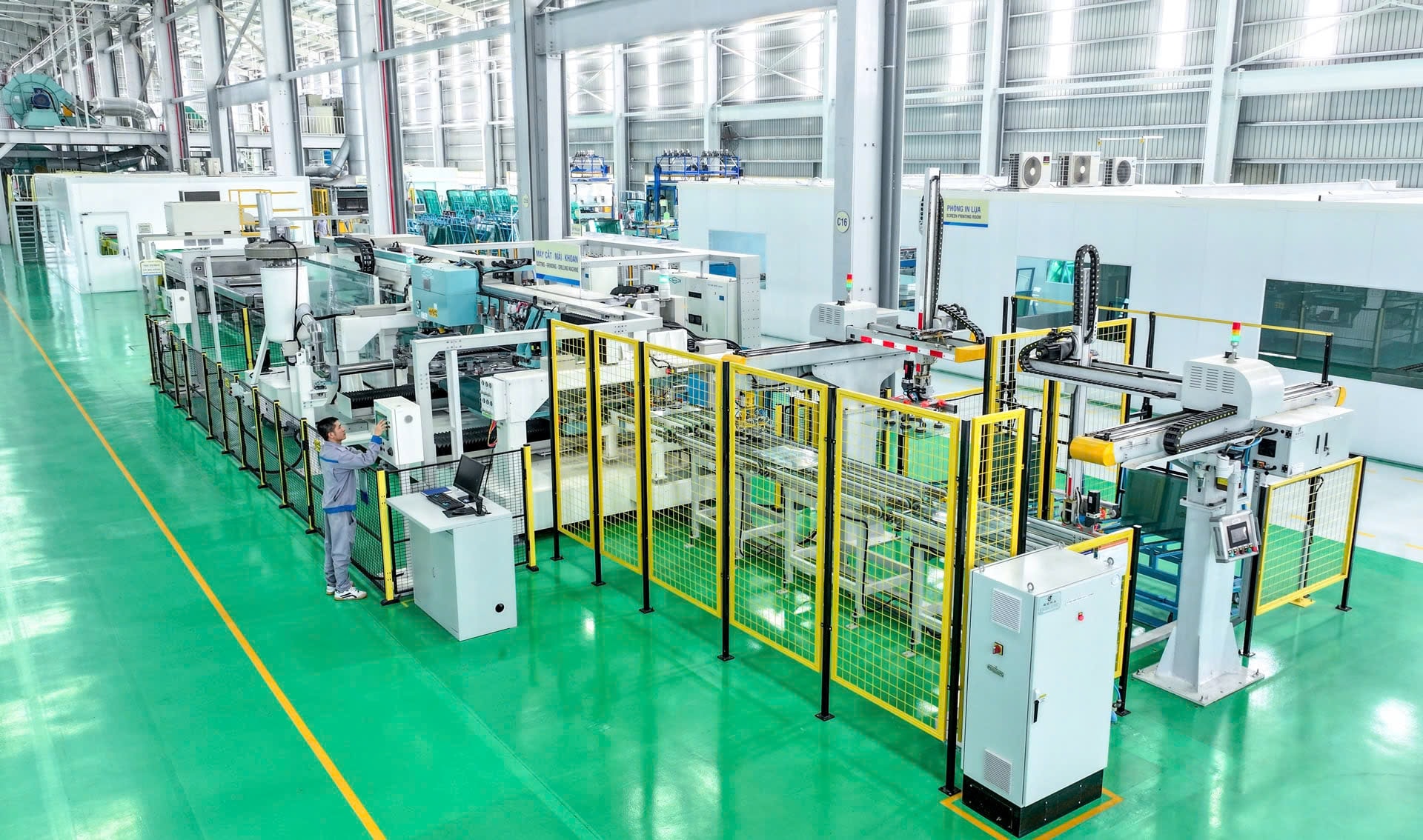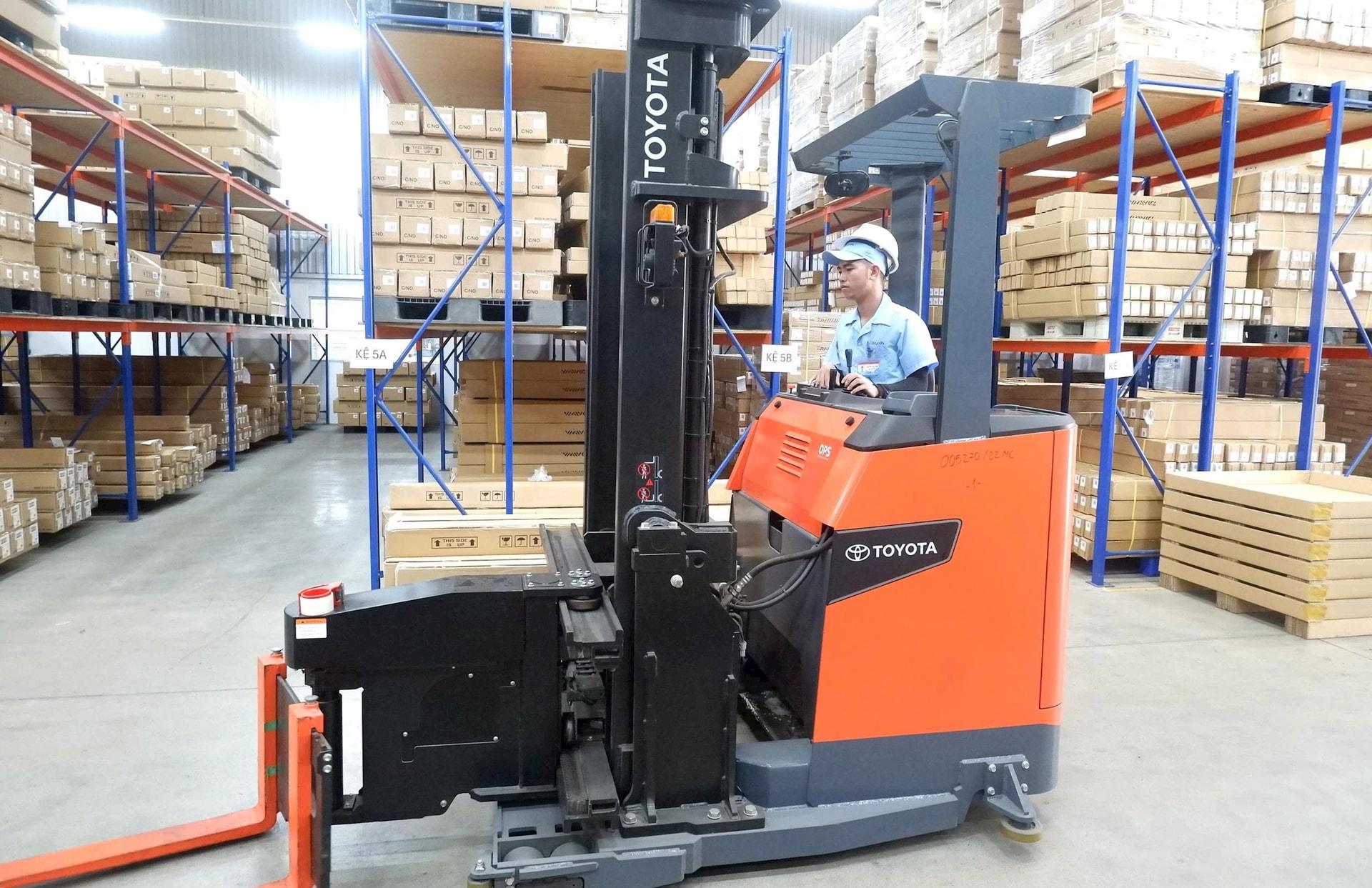
In the coming period, in order for the private economy to develop strongly in the spirit of Resolution No. 68-NQ/TW dated May 4, 2025 of the Politburo , it is necessary to start from the current situation and have appropriate policies for all types of enterprises.
The weakness of the private economic sector
In 2023, the labor force working in the non-state sector accounted for 82% of the total employed labor force. Excluding agriculture, the remaining 55% of the labor force can be considered the private economic sector in industry and services. Regarding the number of enterprises in the private economic sector, in 2023, there were nearly 740,000 enterprises in total, of which more than 490,000 were micro-enterprises and nearly 200,000 were small enterprises. In addition, there were about 5 million individual business households.
Because they are fragmented, small and have to date faced many cumbersome administrative procedures, the majority of small and medium-sized enterprises (SMEs) and micro-enterprises are largely uncompetitive and do not participate in global value chains or supply chains, even though the Vietnamese economy is deeply integrated into the world economy.
Of the 740,000 enterprises in the private economic sector, about 30%, or about 200,000 enterprises, are in the industrial sector. However, only nearly 3,400 enterprises (less than 2%) participate in the production of supporting industries.
Due to their small size, enterprises cannot invest enough to innovate technology, so they have little or no ability to participate in global value chains (GVCs) of multinational companies or FDI companies in Vietnam. According to World Bank data, the rate of GVC participation of Vietnamese enterprises tends to decrease and by 2023 will be lower than that of Cambodia.
Comparing the labor productivity of the three sectors by ownership type, we see that the productivity of the non-state sector is very low, much lower than that of the state and FDI sectors. This gap is increasingly widening.
Policy towards the private economic sector
Apart from a few large enterprises, the private economic sector mainly consists of an informal sector (individuals, households, etc.) and is mostly SMEs and micro-enterprises. Solving the problems of this sector will increase the productivity of the economy rapidly. It is very gratifying that recently, Vietnamese leaders have advocated that the private economic sector must be considered the main driving force for development in the coming time.
Based on the current situation in Vietnam and referring to the experience of East Asian countries, below are policy recommendations on the three constituent groups of the private economic sector.
1. Policy for large enterprises:
The government has a policy to create conditions for large enterprises to participate in public investment projects. This is the right policy. In addition, I would like to propose the following policies:
Sharing vision and long-term economic direction between the state and enterprises. The Party and the state set up research committees to discuss vision and direction, with the participation of representatives of large enterprises and independent scholars and researchers.
In addition, together with private enterprises, promote technology research and innovation activities. For example, the state establishes joint research projects with the participation of large enterprises. Participating enterprises can use research results from these projects to implement applied research and start new startups. In addition, the state should have preferential tax policies to encourage enterprises to invest in research and development (R&D).
At the same time, the government should have a policy to connect large enterprises with SMEs through innovation activities. Through the market mechanism, large enterprises have the incentive to transfer technology and business management methods to SMEs so that SMEs can provide them with intermediate products at low cost and high quality. However, in cases where large enterprises support SMEs to start a business or initiate an innovation that may have many risks, the government needs to have a tax support policy for these cases.
2. Policy for small and medium enterprises (SMEs):
The capital market in Vietnam has developed gradually since the 1990s, but there is still much room for further reform. In particular, SMEs are still at a disadvantage in accessing investment capital. Although the government has established a specialized bank for SMEs, it rarely lends because of the fear of not being responsible for not recovering capital for unsecured loan projects. In addition, SMEs are not supported in other aspects and administrative procedures are still very difficult.
We can refer to Japan's experience in SME policies. Firstly, banks or funds dedicated to SMEs should have many experts capable of appraising investment projects and have a consulting department to help SMEs increase the feasibility of projects. Secondly, a system should be established to provide certificates to consultants specializing in SMEs to encourage the emergence of SME consultants to improve management, establish investment projects as well as help them draft loan applications. Thirdly, the government agency in charge of SME management should have the function of investigating and researching SMEs, market orientation and world technology, monthly issuing newsletters and annually issuing the Small and Medium Enterprise White Book for SMEs to consult on new policies, guide them in doing necessary procedures, and consult on the market situation and technology.
The government should set up a task force to monitor the effectiveness of the above policies. In the process, the task force should select a list of strong SMEs to become partners of large enterprises and FDI. This growing list proves the success of the SME policy.

3. Policy for individual and informal sectors:
According to the 2014 Enterprise Law, a household enterprise is a business unit with fewer than 10 employees, responsible for business activities with its own assets. At the end of 2019, Vietnam had nearly 5.4 million non-agricultural household production establishments, attracting nearly 9.1 million workers. On average, each of these individual non-agricultural production units only hired 1.7 workers.
Such small scale does not allow individual enterprises to use technology and invest in higher productivity areas. These individual units of family nature also face administrative barriers and disadvantages in accessing capital and land for investment. To increase productivity for the whole economy, it is necessary to transform individual production units into formal companies. In fact, the Government has introduced a number of policies for that purpose. However, so far this goal has not been achieved.
For example, the Government’s Decision No. 35/NQ-CP (issued in May 2016) aimed to create many new companies so that the country would have one million enterprises by 2020 and 1.5 million by 2030 (the number of enterprises in 2015 was 442,485). But the results showed that by December 2020, the total number of enterprises was only 811,535.
There are at least two problems that make it difficult for individual producers to convert into organized enterprises. First, the conversion procedure is very complicated and most individual producers do not have enough resources to prepare for the conversion. Second, many individual producers are concerned about the possibility of having to pay more taxes when becoming formal enterprises because of the application of a more modern and transparent accounting system. They often negotiate with local officials to pay less taxes.
To solve the above problems, the following policies are needed: First, simplify administrative procedures and guide local officials to thoroughly implement the policy of converting individual production units into formal enterprises. Second, convince individual production units of the benefits of becoming organized enterprises, and that the benefits will be greater than the additional taxes that may have to be paid. Third, exempt individual units from tax for two or three years to convert them into enterprises.
Policies that promote the transformation of informal production units into organized enterprises will help initiate a process of creative destruction. Some individual units will hire more workers, borrow more capital to expand production thanks to access to capital and support policies. Others will merge with other individual enterprises and become SMEs. Finally, some will dissolve themselves and the workers involved will find new jobs, especially in new companies that appear in the process of differentiation.
Enterprises that aim for high value-added products and high labor productivity must invest heavily, often using capital-intensive technology. They must be large enough, not micro-enterprises or individual production units. With the above-mentioned creative destruction, there are more and more large-scale enterprises that are still SMEs. With the growth and support from policies, the number of SMEs that can participate in the supply chain (GSC) and GVC of FDI enterprises will increase. It is important to emphasize that only when individual units and small enterprises become medium-sized enterprises, and medium-sized enterprises become large enterprises, can they invest more in areas with higher skilled labor content to compete with FDI and connect with FDI in GSCs and GVCs.
The Government should establish a Task Force to convert individual units and elements in the informal sector into enterprises. This Task Force should set a target for the number of new enterprises to be established every 6 months and report to the Prime Minister.
Source: https://baodanang.vn/phat-trien-kinh-te-tu-nhan-trong-giai-doan-toi-3303275.html


![[Photo] Joy on the new Phong Chau bridge](https://vphoto.vietnam.vn/thumb/1200x675/vietnam/resource/IMAGE/2025/9/28/b00322b29c8043fbb8b6844fdd6c78ea)


![[Photo] The 4th meeting of the Inter-Parliamentary Cooperation Committee between the National Assembly of Vietnam and the State Duma of Russia](https://vphoto.vietnam.vn/thumb/1200x675/vietnam/resource/IMAGE/2025/9/28/9f9e84a38675449aa9c08b391e153183)
![[Photo] High-ranking delegation of the Russian State Duma visits President Ho Chi Minh's Mausoleum](https://vphoto.vietnam.vn/thumb/1200x675/vietnam/resource/IMAGE/2025/9/28/c6dfd505d79b460a93752e48882e8f7e)
































































































Comment (0)